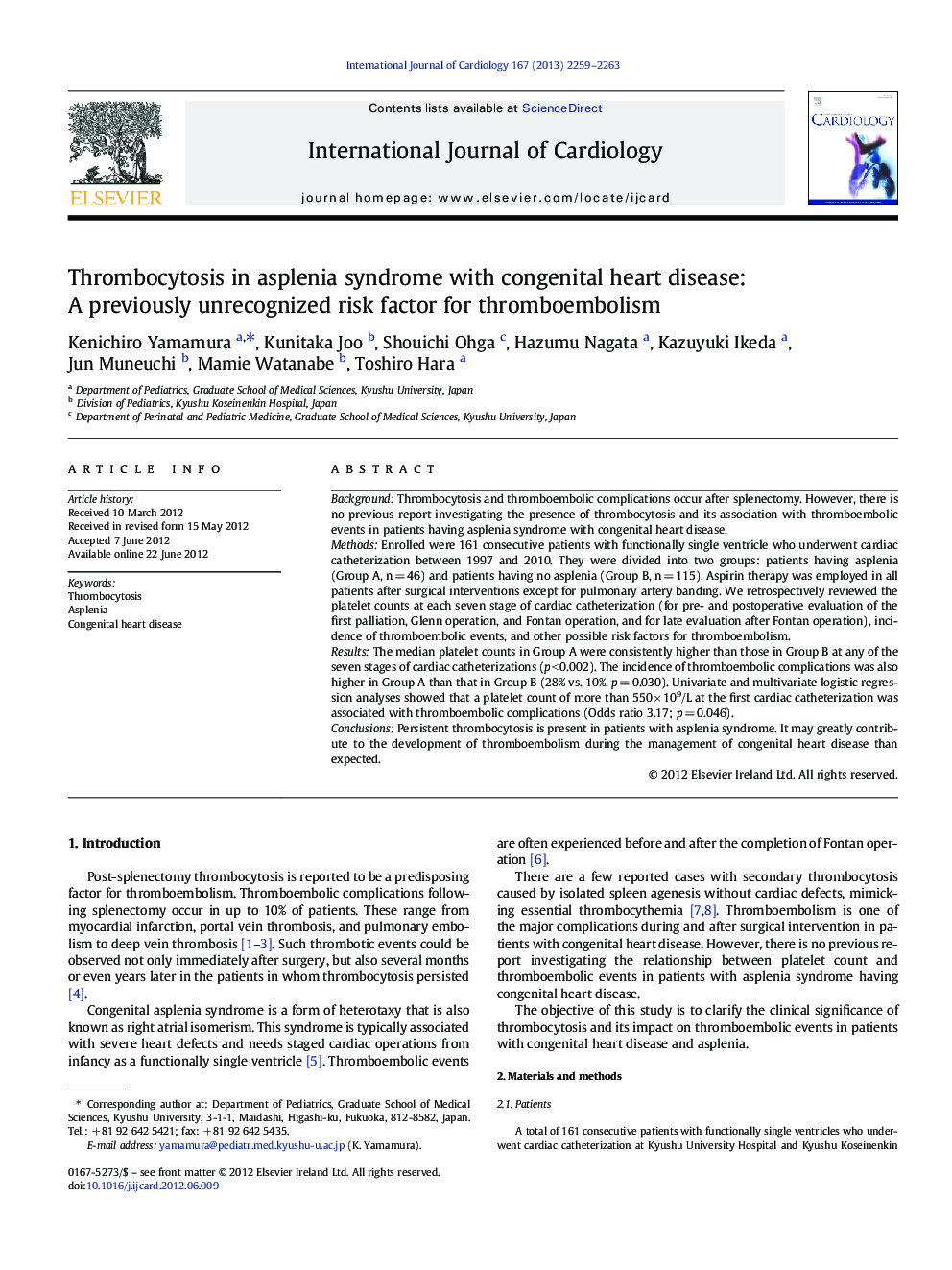| Article ID | Journal | Published Year | Pages | File Type |
|---|---|---|---|---|
| 5977315 | International Journal of Cardiology | 2013 | 5 Pages |
BackgroundThrombocytosis and thromboembolic complications occur after splenectomy. However, there is no previous report investigating the presence of thrombocytosis and its association with thromboembolic events in patients having asplenia syndrome with congenital heart disease.MethodsEnrolled were 161 consecutive patients with functionally single ventricle who underwent cardiac catheterization between 1997 and 2010. They were divided into two groups: patients having asplenia (Group A, n = 46) and patients having no asplenia (Group B, n = 115). Aspirin therapy was employed in all patients after surgical interventions except for pulmonary artery banding. We retrospectively reviewed the platelet counts at each seven stage of cardiac catheterization (for pre- and postoperative evaluation of the first palliation, Glenn operation, and Fontan operation, and for late evaluation after Fontan operation), incidence of thromboembolic events, and other possible risk factors for thromboembolism.ResultsThe median platelet counts in Group A were consistently higher than those in Group B at any of the seven stages of cardiac catheterizations (p < 0.002). The incidence of thromboembolic complications was also higher in Group A than that in Group B (28% vs. 10%, p = 0.030). Univariate and multivariate logistic regression analyses showed that a platelet count of more than 550 Ã 109/L at the first cardiac catheterization was associated with thromboembolic complications (Odds ratio 3.17; p = 0.046).ConclusionsPersistent thrombocytosis is present in patients with asplenia syndrome. It may greatly contribute to the development of thromboembolism during the management of congenital heart disease than expected.
